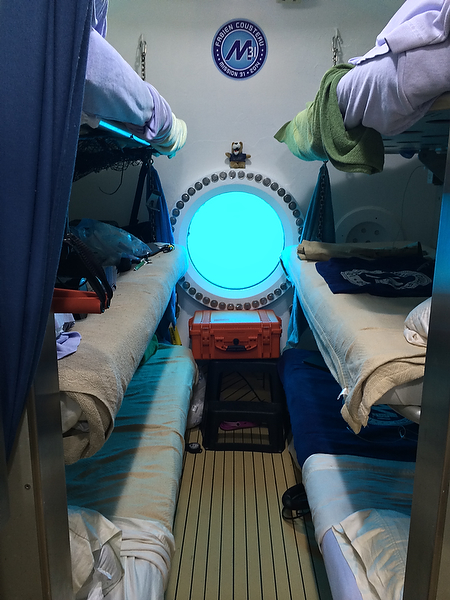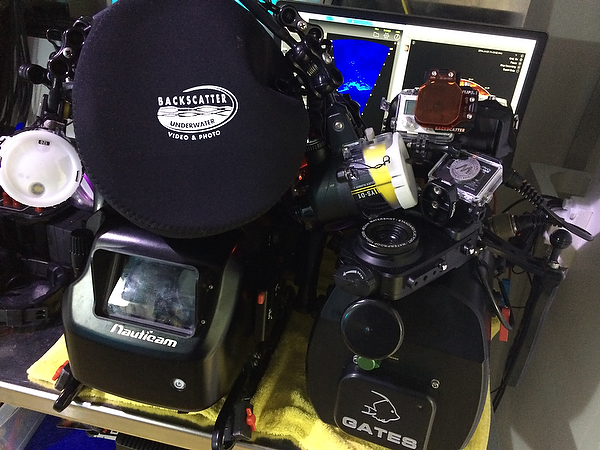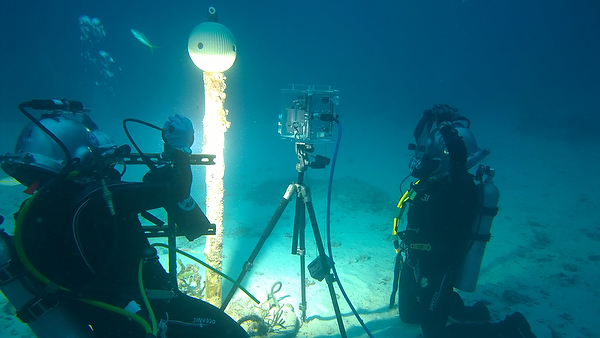Reports from Aquarius: Mission 31 updates
Fabien Cousteau and his team are currently ensconced in the Aquarius habitat, 4.5 km off Key Largo, Florida at a depth of 50 feet. The aim of Mission 31 is to “recreate” Fabien’s grandfather’s Conshelf experiments with undersea dwelling and to carry out research into “climate change and the related challenges of ocean acidification, ocean pollution with an emphasis on the effects of plastics and overconsumption of resources with specific focus on the decline of biodiversity”
Matthew Ferraro, an experienced and accomplished filmmaker with over 15 years in film production, is the Director of Photography for the project, and will be providing the Wetpixel community with “live” reports from the project throughout the next 30 days.
Matthew Ferraro’s blog from Mission 31-Part 1.
Living in an undersea World
Fifty years ago the possibility of humans inhabiting the ocean floor was introduced into the public imagination by Jacques-Yves Cousteau’s film World without Sun. Like many in my and previous generations, the Cousteau legacy shaped our view of the world and what we consider possible in our own lives. It is in this spirit that Fabien Cousteau’s Mission 31 looks to inspire todays public. At Aquarius, the only remaining sea floor laboratory in the world, Fabien and a team of aquanauts will spend 31 days 50 feet under the sea. As Director of Photography for Mission 31 I am presented with the honor and unique challenge of documenting the project from both above and below the surface. Last night was my first in Aquarius, beginning my two week saturation experience, and leaving me with too much to relay in one posting. For those of you who have spent a lot of time on small boats the experience is much the same in some respects. Tight quarters, shared spaces, and limited outlets for charging! It makes me feel right at home!

The challenges of living and working at 2 1/2 atmospheres in high humidity are unique. Everyday new gremlins seem to appear in batteries, electronics, and cameras. A camera that was working all of a sudden won’t and battery that was fully charged one second will have no charge the next. But we all remain flexible, adapt and take it in our stride.
From the camera perspective 31 is an underwater camera geek’s dream, perfect for me! We have the RED Epic in a Nauticam PL housing, the Nikon D800 in an Aquatica housing, a Nikon D600 in a Sea & Sea housing, custom Backscatter GoPro Hero 3+ galore, Nokia Lumia 1020s in custom Watershot housings, a Sony PMW200 in a Gates underwater housing, and an Edgertronic high speed camera in a Sexton custom underwater housing.

They are all great tools for telling a story but the Edgertronic to me is the most exciting.
Aquanaut Grace young, scientist and a recent MIT grad was loaned the camera from Edgertronic a small company started by two gentlemen, one an MIT grad. The camera gets its name from Dr. Edgerton, a pioneer in a number of technologies including stop motion photography and inventor of the underwater flash. Dr. Edgerton was also a close friend of Jacques Cousteau and joined him on a number of expeditions.
The Edgertronic is capable of 500 frames per second at it highest resolution and an astounding 18000 frames per second at a reduced resolution. Grace is attempting to capture a number of wildlife behaviors in ultra slow motion, with the ultimate goal of capturing the feeding behavior of the Goliath grouper.

You can follow her progress with the Edgertronic here and the progress of the mission, including live feeds, here.
Stay tuned for more from the undersea world of Aquarius!